I began writing this post on the Feast of the Nativity of Our Lady, which is the main feast day of Our Lady of Glastonbury, and I’m hoping to publish it by the Feast of Our Lady of Walsingham this week.
Today I am drawing together all the connections and symbolic echoes I see in the two most important sites of Marian devotion in England - Glastonbury and Walsingham.
I want to make a few preliminary remarks to paint a larger context to this post, as some of it is quite speculative.
The sites and the events that I examine in this post are very ancient and go right back into the first century. Many traditions have built up around them and of course there is rarely any solid historical evidence. This can sometimes lead into flights of fancy, which I’m hoping to avoid.
However, the clearly powerful mythic and symbolic resonance of the events and places I’m looking at here create an intriguing pattern, which I believe is something more than my own projection. The Catholic faith is an embodied religion, the Incarnation is the central event of history, the place where time and place intersect with eternity, and as such the world and the age are never merely ‘hooks’ upon which to hang our spiritual baggage, but the very character of them reveals God to us if we are looking clearly.
It is with this central fact in my mind that I examine the places and legends of this island. I am attempting something like notes toward a sacred history of Britain. Over at his substack, John Fitzgerald has a series called The Book of Holy Kings, which I highly recommend, especially the post below, which will get you in the right mood to appreciate what I’m writing about here:
Whenever I read it the series stirs the fires of devotion in my soul. That is what I’m aiming for. As T. S. Eliot says in ‘Little Gidding’:
You are not here to verify,
Instruct yourself, or inform curiosity
Or carry report. You are here to kneel
Where prayer has been valid. And prayer is more
Than an order of words, the conscious occupation
Of the praying mind, or the sound of the voice praying.
And what the dead had no speech for, when living,
They can tell you, being dead: the communication
Of the dead is tongued with fire beyond the language of the living.
Here, the intersection of the timeless moment
Is England and nowhere. Never and always.
The communication of the dead is tongued with fire beyond the language of the living. What can they tell us if we have an ear to hear? What can those saints of this land be saying to us?
St Dunstan, St Patrick, St David, St Joseph of Arimathea, St Helena, St Edmund King and Martyr, St Edward the Confessor, St Bede, St Cedd, St Gregory, St Winefride, St Michael, Our Lady of Walsingham, pray for us.
My thoughts in this post were brewing for a long time as I reflected on this land as Our Lady’s Dowry, and my experiences at two of the greatest of her shrines at Glastonbury and Walsingham. Put simply, I was struck by the dual natures of both places, and the way they both simultaneously pointed forwards and backwards in time. As time went on I realised more dualities were present - the two shrines at Walsingham, Catholic and Anglican, the two springs at Glastonbury, the red and the white. The Christian versus the pagan/New Age at Glastonbury, also reflecting the Anglican versus Catholic at Walsingham, and the two great Abbeys, both in ruins, and both containing a ‘house not built by human hands’.
Walsingham
Most people know that Walsingham had the largest Marian shrine in medieval Christendom - it was one of the ‘big four’ pilgrimage sites (Rome, Jerusalem, and Compostela being the others), but it is a fact less well-known that the Lady Chapel at Glastonbury Abbey was the oldest shrine to Mary north of the Alps, and the Marian connections at this shrine are perhaps even stronger than those at Walsingham, although more hidden.
As I was writing and researching this post EWTN Great Britain released a video documentary about the theological significance of Walsingham, which serendipitously chimed with the key thing I was grappling with - the symbolic significance of the two possible sites for the Holy House at Walsingham and their connection to the Biblical story of Gideon’s Fleece. It’s well worth watching:
Walsingham Holy House and the Lady Chapel at Glastonbury Abbey: A Twofold Mystery
One of the key sources for the origins of the Holy House at Walsingham is the Pynson Ballad, published in 1497. It tells the story of the construction of the Holy House:
In spyryte Our Lady to Nazareth hir led And shewed hir the place where Gabryel hir grette:"Lo doughter, consyder" to hir Oure Lady sayde," Of thys place take thou suerly the mette, Another lyke thys at Walsyngham thou sette Unto my laude and synguler honoure; All that me seke there shall fynde socoure
This forsayd hous in haste she thought to spede, Called to hir artyfycers full wyse, This chapell to forge as Our Lady dyd devyse. All this, a medewe wete with dropes celestyall And with sylver dewe sent from hye adowne Excepte tho tweyne places chosen above all Where neyther moyster ne dewe myght be fowne. This was the fyrste pronostycacyowne Howe this our newe Nazareth here shold stande, Bylded lyke the fyrste in the Holy Lande
Whan it was al fourmed, than had she great doute Where it shold be sette and in what maner place, Inasmoche as tweyne places were founde oute Tokened with myracle of Our Ladyes grace; That is to say, tweyne quadrates of egall space As the flees of Gedeon in the wete beynge drye, Assygned by myracle of holy mayde Marye
Richeldis is taken ‘in spirit’ to Nazareth and told by Our Lady to carefully take the measurements of the house there so that she make another like it at Walsingham. When her artificers set out to build it, they find two dry spots in a meadow all wet with dew, and the ballad likens this to the miracle of Gideon’s fleece.
Gideon’s fleece is a sign of the promise of salvation, and is explicitly linked, in places like the Biblia Pauperum, to Our Lady, specifically the prophecy of Isaiah 7:14: “Therefore the Lord himself shall give you a sign. Behold a virgin shall conceive, and bear a son, and his name shall be called Emmanuel.”
In the story of Gideon’s fleece, there are two miracles - in one the fleece is wet with dew and the ground is dry, and Gideon rinses the water out into a bowl. Then he asks again for a sign and again lays out the fleece and the ground is all wet with dew but the fleece remains dry.
The Church Fathers interpret this as the graces first given to Israel (the dew on the fleece), which are then given to the world (the dew on the ground), but Israel is reprobate with the coming of Christ (the fleece is dry). Augustine also likens the fleece to a cloud which contains moisture or remains dry - the presence or lack of life-saving water.
So why do we have two patches of ground in the Walsingham story that were dry and had no dew? The first patch Richeldis chose for the Holy House couldn’t be built on by human artifice, but the House was constructed through supernatural means on the second patch.
If we read this sign in an anagogical sense, with an ear to its prophetic potential, could we see this as a foreshadowing of the fate of the shrine, and even of England as Mary’s Dowry?
In both the story of Gideon’s fleece and the siting of the Holy House at Walsingham, there is a temporal dimension in which the petitioning and waiting of both Gideon and Richeldis is rewarded with a dual sign. In both narratives, the duality is a feature of a before and after, a partial attempt, followed by a wholeness.
Perhaps we can see in this a sense that the house built by God, that in some sense is Mary herself as the Immaculate, is given as a gift to this land, but that we can lose the graces she bestows through her presence in her shrines, as we did after 500 years of her shrine at Walsingham. But it might also point to a future time when God will build her house in England again.
The Wattle and Daub chapel
And what of Glastonbury? For the first millennium Our Lady had a house built for her - The wattle and daub church which some claim was built by Jesus himself - God’s own work. Whether we believe this, or if it was built instead by Joseph of Arimathea, there was certainly a very ancient chapel to Our Lady at Glastonbury. Later this primitive church was replaced with sacred buildings in stone by master stonemasons - real ones who embodied sacred geometry in the building to point to God.
The early 12th century Chronicler William of Malmesbury was invited to record the history of the Abbey around 1125, and wrote,
“This church, then, is certainly the oldest I know in England, and from this circumstance derives its name (vetusta ecclesia).... In the pavement may be seen on every side stones designedly inlaid in triangles and squares, and figured with lead, under which, if I believe some sacred enigma to be contained, I do no injustice to religion.”
So there seems to be a special significance to the floorplan of the church, and here again I feel that we have a link between the two shrines. When Richeldis is taken in vision to the Holy House at Nazareth she is told by Our Lady to carefully take the measurements of the house there so that she make another like it at Walsingham.
The measurements of the Holy House are important. But Richeldis’ craftsmen do not have the skill to build with them. Could the Holy House at Walsingham have embodied sacred geometry in its dimensions? We know that the Lady Chapel at Glastonbury did:
It has been shown that sacred geometry was embodied in these ancient cathedrals. In fact, as Tom Bree, geometer who wrote a book on the symbolism of the Lady Chapel at nearby Wells Cathedral, says:
Gothic cathedral design lays a great emphasis upon ‘ascent’. Whether it be the soaring spires or the very high vaults, or even the horizontal ‘ascent’ eastwards towards the rising Sun, there is encouragement for the soul to look upwards in aspiration for the climbing of Lady Philosophy’s ladder. In the symbolism of the soul’s ascent there are a number of degrees that act much likes rungs upon a ladder. But there is also a relational correspondence between these degrees and this is something that can be expressed or reflected through geometry and arithmetic via harmonious and interconnected sequences of numerical relationship.
The symbolism of the Lady Chapel is very rich, and clearly in both Glastonbury and Walsingham’s chapels dedicated to the Blessed Mother, we have an emphasis on specific symbolism conveyed through harmonious proportions. I want to unpack the possibilities here a bit more.
The Garden, The Chapel, The Lady
“A garden enclosed is my sister, my spouse: a spring shut up, a fountain sealed.” Song of Songs 4:12
Mary as the enclosed garden is naturally associated with Britain. The very word Britain comes from the word Prydein, which meant the enclosure or precinct. The enclosed garden is a sacred precinct, inviolable, a symbol of the virginity of Mary.
As Tom Bree says in his chapters on the Rose Garden:
The virginity of Mary can also be seen symbolically as representing the soul’s inward state, in which it is completely untouched pure and empty, which makes it possible to conceive the divine Logos. On medieval world maps the Garden of Eden was depicted as being in the easternmost point, in the same way that the Lady chapel is at the easternmost point of a cathedral.
It then seems fitting for Our Lady to ask Richeldis to build the Holy House here in the sanctuary, the sacred enclosure, Prydein or Britain. She wanted to indicate that this land was her dowry, a land that she and her son had both visited with St Joseph of Arimathea.
‘Building Back Better’ - Controlled Demolition, Stage 1 - The Protestant Reformation
From the perspective of Satan the Protestant Revolution was necessary as the controlled demolition of Abbeys and therefore monasticism and vast amounts of graces which descended on us from the constant contemplative prayer offered at those places stopped which enabled a spiritual wasteland to occur.
In the lamentations of England Blessed Dominic Barberi says:” We have sinned against thee, we have forsaken thee, the fountain of living waters, and we have abandoned thy holy spouse the Catholic Church ; we have hewn out for ourselves cisterns, broken cisterns, which cannot afford us one drop of true consolation.”
Both towns are links back to the Holiest Earth - Our Lady’s Dowry, and could they also be looking forward to a future time of unity? Could their very fracturing be a prefigurement of some future wholeness?
As the Pynson ballad mentions, the two possible places to build the Holy House recall the fleece of Gideon.
In this story both patches of ground are dry, but Our Lady brings graces to the second patch.
There is a hint here about the spiritual dryness of the Anglican church. Could a future time of conversion of England when England returns to Mary constitute a coming back in of the Church of England into the one true fold of Christ and the rebuilding of the Holy House on its true site?
There is a kind of reverse image in the two dry patches of ground, it being a kind of mirror of Israel - the Church, where Israel loses the graces and they are given to the Church. In this image the graces are given by Our Lady descending on the second patch and then taken away from England when Henry destroys the Shrine.
As Dominic Barberi recognised, those of us English Catholics who are willing to take on works of reparation for this spiritual disaster such as the recent Latin Mass Society pilgrimage from Ely to Walsingham, are surely pleasing in the eyes of God, and we can do our own bit by praying the litany of intercession for England, maybe on the Feast of Our Lady of Ransom on Tuesday.
The Feasts of Our Lady’s Birthday on the 8th September (Feast of Our Lady of Glastonbury also), and the Feast of Our Lady of Ransom (which is the feast for Our Lady of Walsingham) on the 24th September (now granted as a national Feast day as of the current year), are this month. They would be good times to pray for the conversion of England, and the return of Our Lady to her Dowry.
Litany of Intercession for England
Remember not, O Lord, our offences, nor those of our parents; neither take Thou vengeance of our sins.
Lord have mercy. Lord have mercy.
Christ have mercy. Christ have mercy.
Lord have mercy. Lord have mercy.
Jesus, receive our prayers. Lord Jesus, receive our prayers.
God the Father, Creator of the world, have mercy on us.
God the Son, Redeemer of the world, have mercy on us.
God the Holy Ghost, Perfecter of the elect, have mercy on us.
Sacred Trinity, three Persons and one God, have mercy on us.
Holy Mary, Mother of God, pray for England.
Holy Mary, Queen of Angels, who alone destroyest all heresies, pray for England.
Holy Mary, Virgin of virgins, whose eminent sanctity our Lord hath honoured with so many miracles, pray for England.
St. Michael, prince of the Church, pray for England.
St. Gabriel, glorious messenger of our Saviour's Incarnation, pray for England.
St. Raphael, faithful guide of those who have lost their way, pray for England.
Holy Angel, to whose custody this province is committed, pray for England.
All ye holy Angels and blessed Spirits of heaven, who celebrate with joy the conversion of sinners, pray for England.
St. John the Baptist, precursor of the Messias, and great example of penance, pray for England.
All ye holy Patriarchs and Prophets, friends of God, and advancers of His truth, pray for England.
St. Peter, prince of the Apostles and supreme pastor of Christ's sheep, pray for England.
St. Paul, doctor of the Gentiles, who, of a persecutor, becamest a preacher, pray for England.
St. Andrew, first disciple of Christ, and constant lover of the cross, pray for England.
All ye holy Apostles and Evangelists, chief planters of the Christian faith, and zealous maintainers of Catholic unity, pray for England.
St. George, our principal patron, pray for England.
St. Alban, our first martyr, pray for England.
St. Thomas of Canterbury, who, as a faithful shepherd, laidst down thy life in defence of the Church, pray for England.
All ye holy Martyrs of this nation, who voluntarily lost your lives here to find them in joyful eternity, pray for England.
St. Gregory, most vigilant Bishop of the Universal Church, whose pious zeal sent missioners from Rome for the conversion of our ancestors, pray for England.
St. Augustin, Apostle of this nation, by whom our forefathers were claimed from paganism and infidelity, pray for England.
St. Bede, most venerable Confessor, by whose religious life and learned writings the Catholic faith was eminently propagated amongst us, pray for England.
All ye holy Bishops and Confessors, by whose wisdom and sanctity this island was once a flourishing seminary of religion, pray for England.
St. Helen, most holy queen and mother of the first Christian emperor, pray for England.
St. Ursula, most blessed martyr, who diedst in the glorious defence of faith and chastity, pray for England.
St. Winefride, most admirable virgin, even in this unbelieving generation still miraculous, pray for England.
All ye holy Saints of this nation, who, amidst the innumerable joys of heaven, still retain a particular charity for the salvation of your country, pray for England.
All ye holy Saints of all places, who, though divided here in several regions, were united in the same faith, and now enjoy one common felicity, pray for England.
Be merciful, spare us, O Lord.
Be merciful, graciously hear us, O Lord.
From the spirit of pride, rebellion, and apostacy, deliver England, O Lord.
From the spirit of hypocrisy, profaneness, and sacrilege, deliver England, O Lord.
From the presumption of private opinion, and contempt of the authority of Thy Church, deliver England, O Lord.
From schism, heresy, and blindness of heart, deliver England, O Lord.
From gluttony, drunkenness, and the false liberty of an undisciplined life, deliver England, O Lord.
That it may please Thee to hasten the conversion of this our miserable country, and reunite it to the ancient faith and communion of Thy Church, we beseech Thee, hear us.
That it may please Thee particularly to have mercy on our relations, friends, and benefactors, and open their eyes to see the beauty of Thy truth, and embrace it, we beseech Thee, hear us.
That is may please Thee to comfort and strengthen Thy servants, who suffer for the Catholic faith, we beseech Thee, hear us.
That it may please Thee not to permit the weakest of us, by any temptation whatsoever, to fall away from Thee and Thy truth, we beseech Thee, hear us.
That it may please Thee to assist with Thy special grace those good pastors who venture their lives for their flock, we beseech Thee, hear us.
That it may please Thee daily to augment in them the fire of Thy love and the zeal of gaining souls, we beseech Thee, hear us.
That it may please Thee to preserve the Catholics of this land from all sin and scandal, we beseech Thee, hear us.
That it may please Thee so to adorn their lives with solid piety, that others, seeing their good works, may glorify Thee our heavenly Father, we beseech Thee, hear us.
That it may please Thee to enlighten the hearts of all schismatics with Thy powerful grace, we beseech Thee, hear us.
That it may please Thee to show them the danger of their state, and the great importance of eternal salvation, we beseech Thee, hear us.
That it may please Thee mercifully to look down from Heaven on the tears of the afflicted, and the blood of so many martyrs, who have spent their lives, and suffered death to convert us to Thee, we beseech Thee, hear us.
Son of God, we beseech Thee, hear us.
Lamb of God, Who takest away the sins of the world, spare us, O Lord.
Lamb of God, Who takest away the sins of the world, graciously hear us, O Lord.
Lamb of God, Who takest away the sins of the world, have mercy on us.
Christ, hear us. Christ graciously hear us.
Let us pray. Almighty and everlasting God, Whose judgments are righteous and counsels unsearchable; Who visitest the iniquity of the fathers upon the children, unto the third and fourth generation, and yet at length remeberest mercy; forgive, we beseech Thee, the sins of our forefathers, and turn away Thy wrath from their posterity; deliver the ignorant from being seduced by false teachers, and the learned from being abused by their passions, and the whole nation from the spirit of contradiction, licentiousness, and discord; that instead of so many divisions and changes in religion, under which they labour, they may be again restored to that unity of mind, steadiness of faith, and tranquility of conscience, which is no where to be sought but in communion of Thy Church, nor possible to be found but by the conduct of Thy grace. Through our Lord Jesus Christ. Amen.


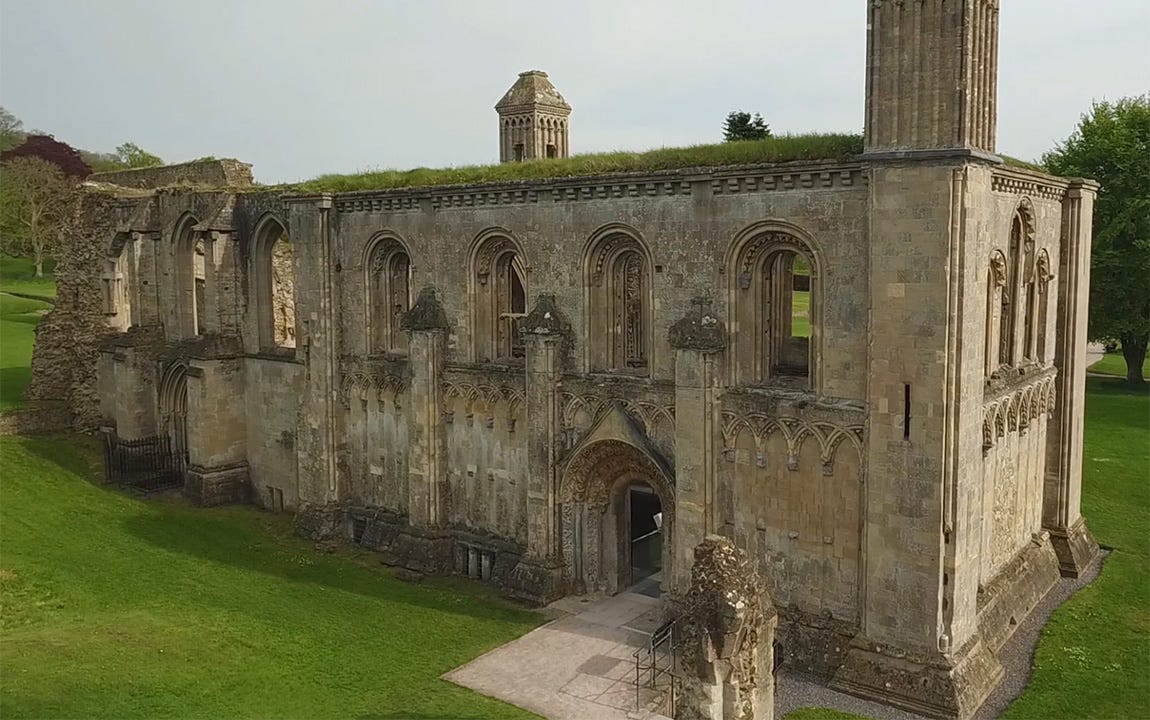
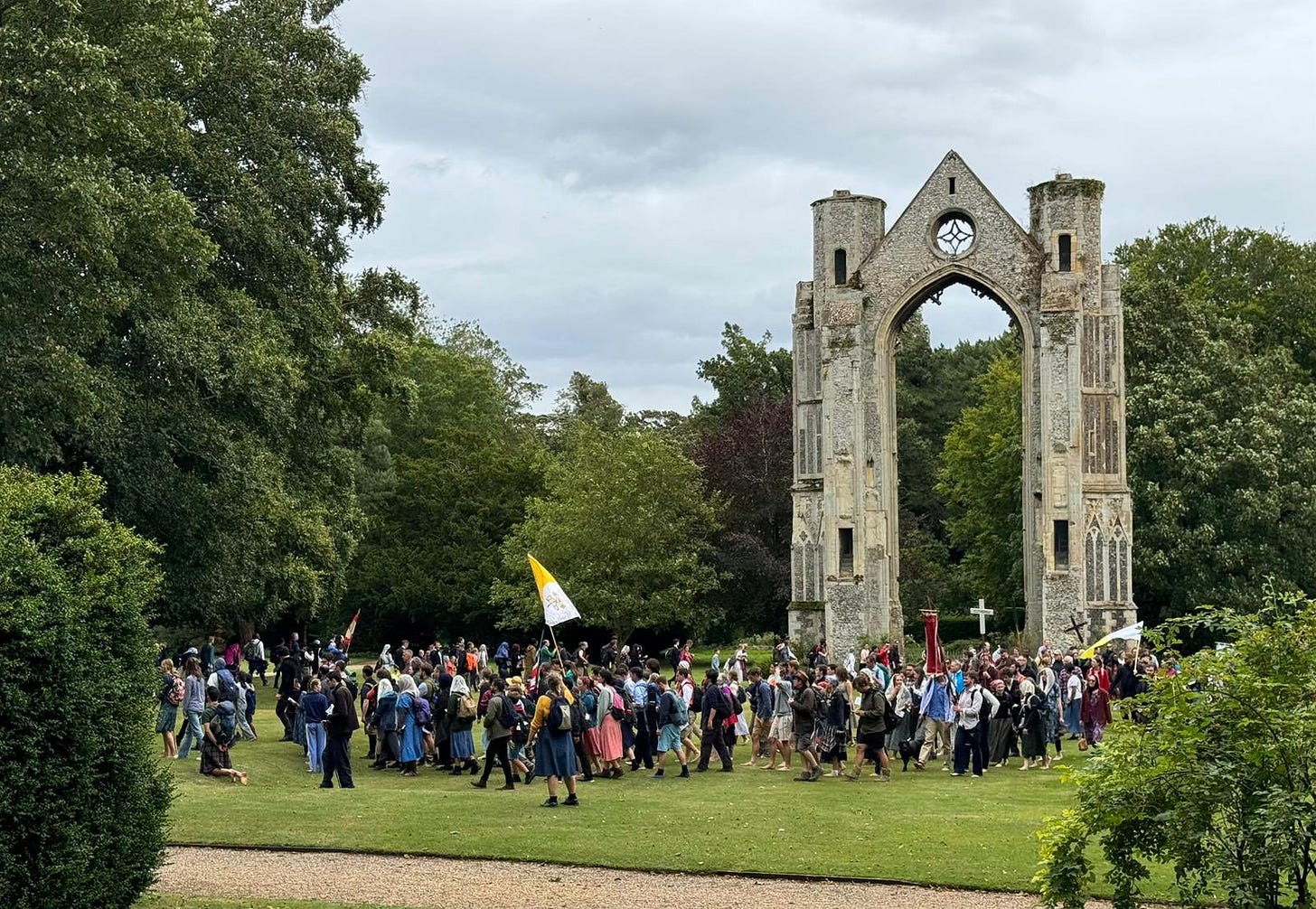

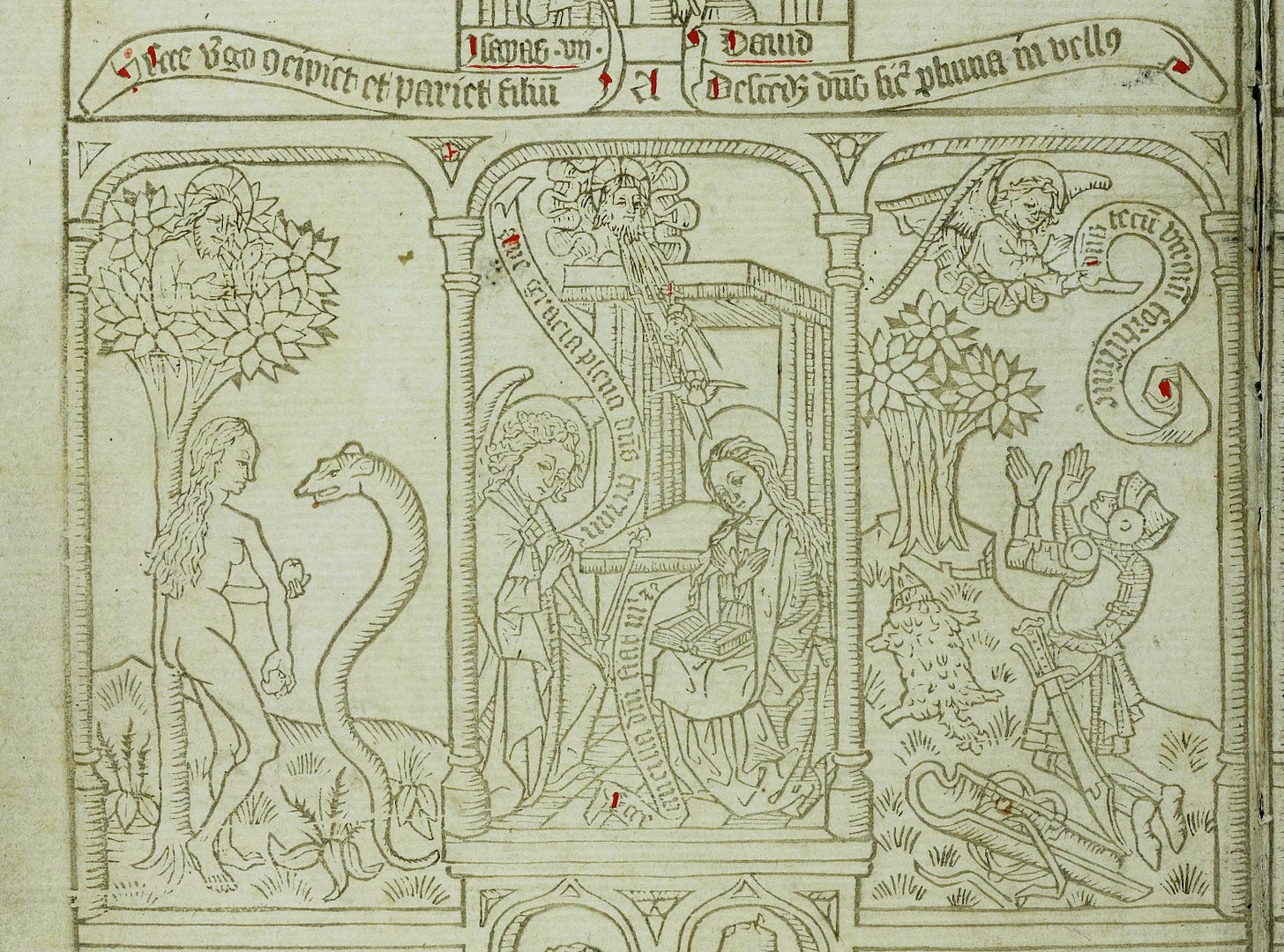
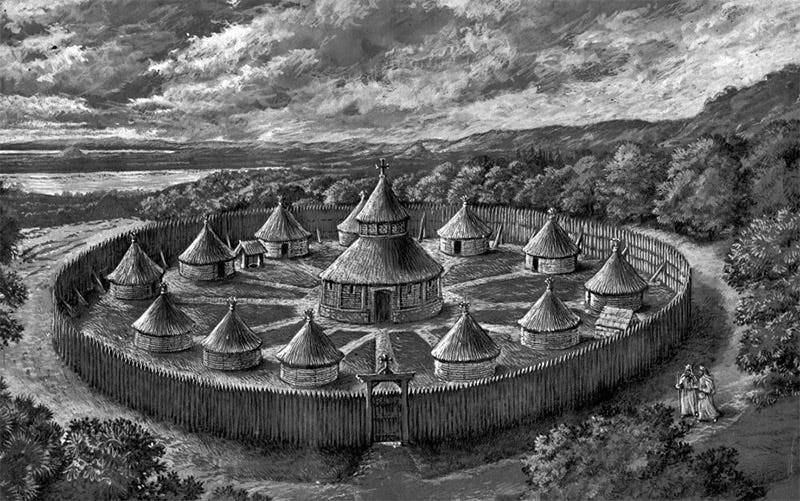
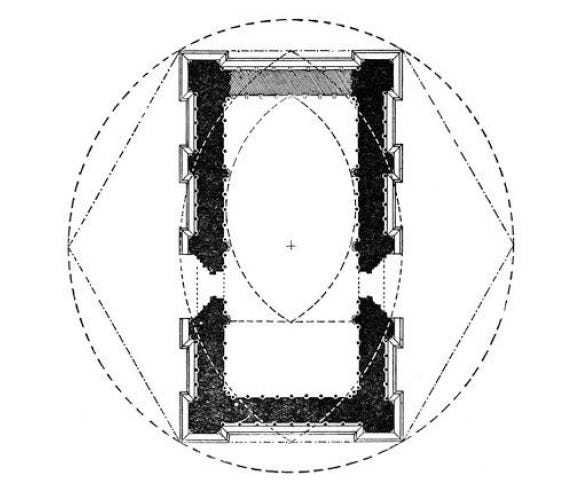
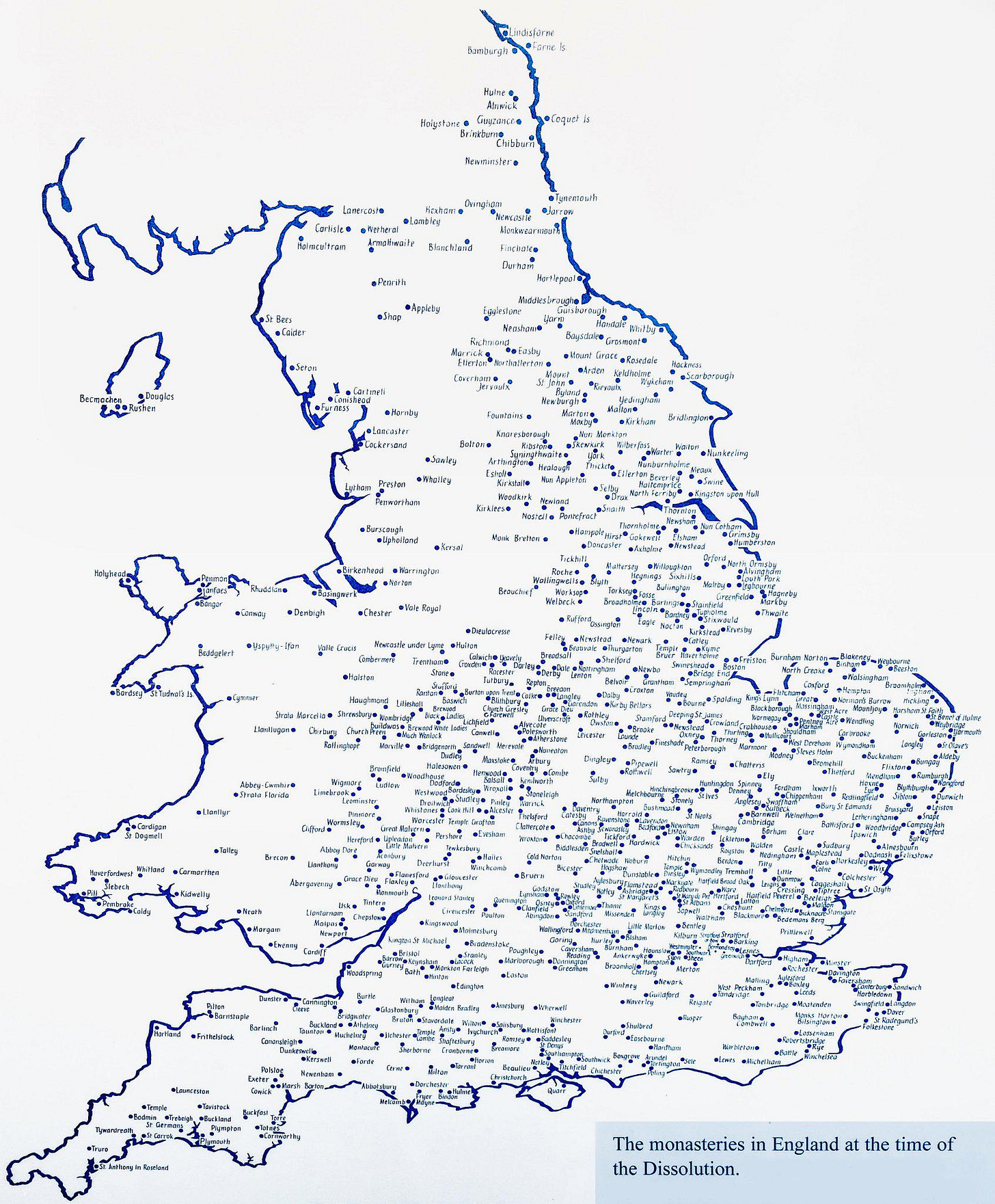
Thanks Matt. No, wouldn't know where to start with finding a publisher tbh. It's just about getting it off the Internet and into the physical world. With pictures too! Best wishes for Michaelmas and keep up the good work!
Matt-Glastonbury chapel looks so interesting. I’m so glad you mentioned it. And thank you for sharing TS Elliot’s poetry: “Here, the intersection of the timeless moment | Is England and nowhere. Never and always.” I appreciate this reminder. Thank you.